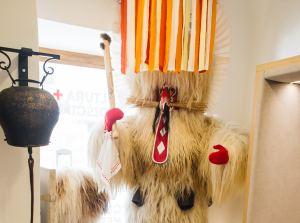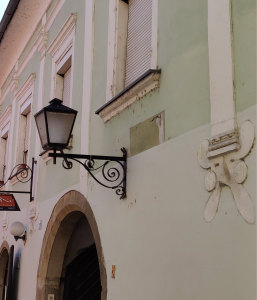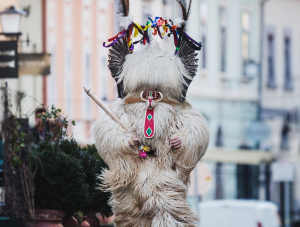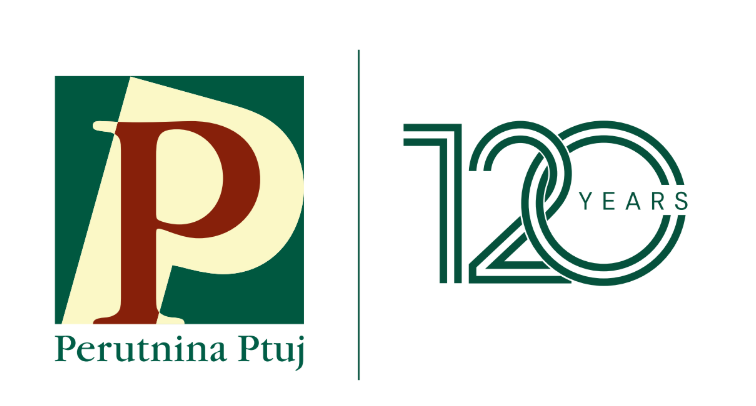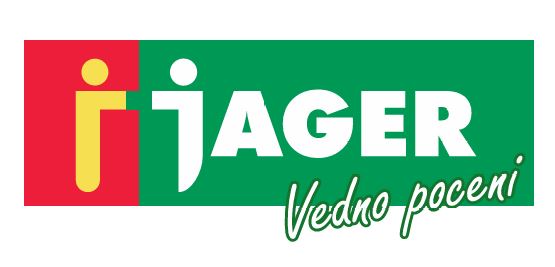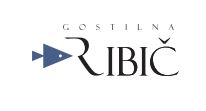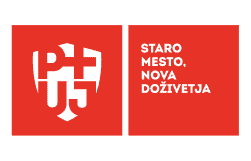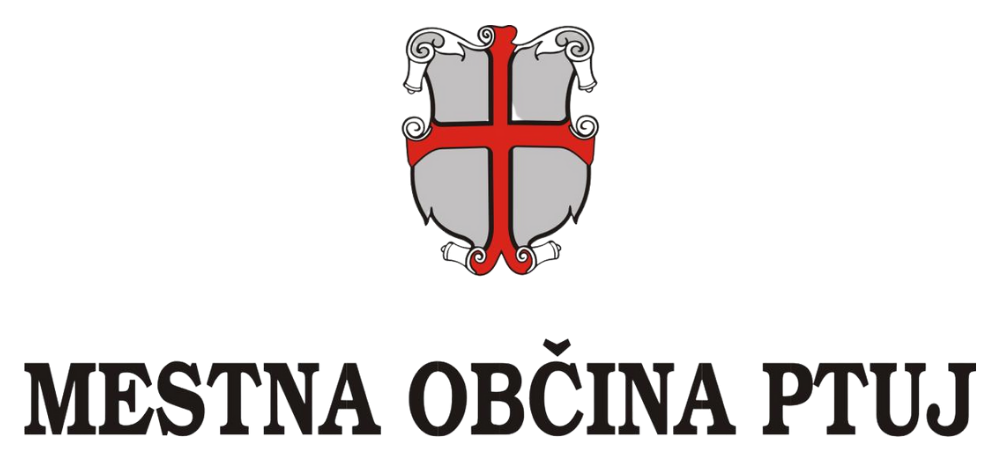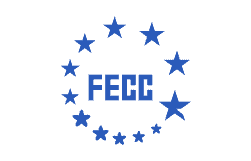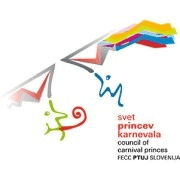7.-17 februar-2026

7–17 February 2026
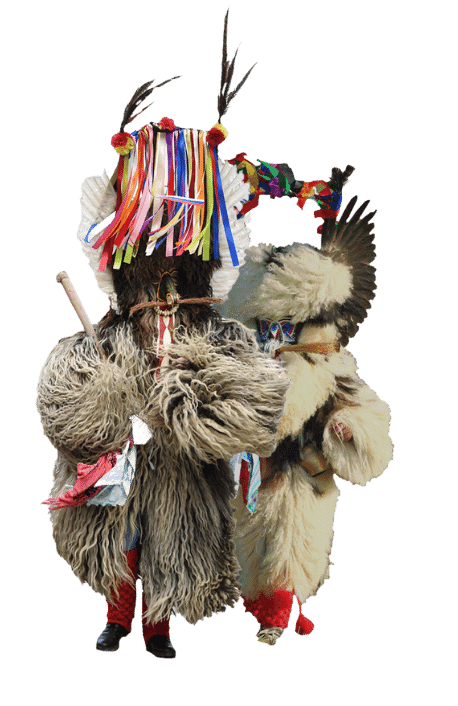
Tradition
Entry of the Door-to-door rounds of Kurenti on the Representative List of the Intangible Cultural Heritage of Humanity.
At its annual meeting, the Intergovernmental Committee for the Safeguarding of the Intangible Cultural Heritage of the United Nations Educational, Scientific and Cultural Organization (UNESCO) declared the entry of the Door-to-door rounds of Kurenti on the Representative List of the Intangible Cultural Heritage of Humanity.
Tradition
Entry of the Door-to-door rounds of Kurenti on the Representative List of the Intangible Cultural Heritage of Humanity.
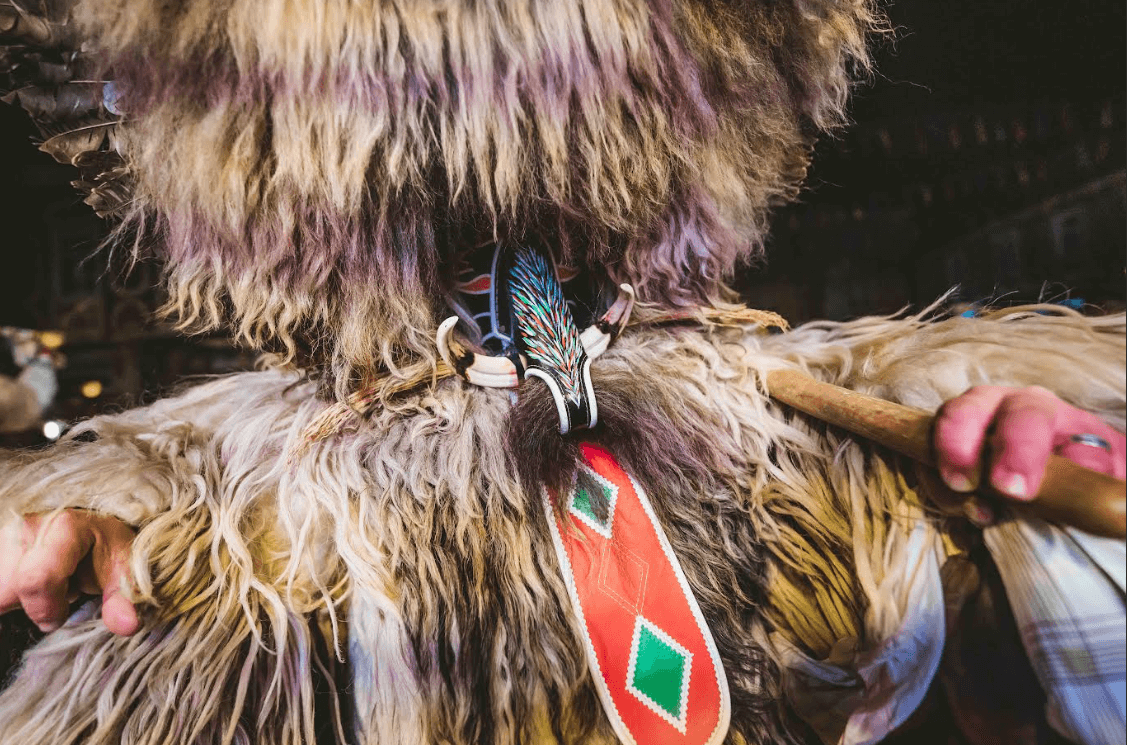
At its annual meeting, the Intergovernmental Committee for the Safeguarding of the Intangible Cultural Heritage of the United Nations Educational, Scientific and Cultural Organization (UNESCO) declared the entry of the Door-to-door rounds of Kurenti on the Representative List of the Intangible Cultural Heritage of Humanity.
News
Kurentovanje in Ptuj
22 February-4 March 2025
Carnival events
public part of Kurentovanje
Kurentovanje Program Organizer: Public Institute Ptuj
CARNIVAL HALL Organizer: Radio Tednik Ptuj doo


























































Experience Kurentovanje
Ptuj is a city where thousands of years of history, heritage and culture are intertwined. Kurentovanje takes the highest place among the most visited experiences, when the city is transformed into the largest open-air ethnographic museum of intangible cultural heritage. It is an excellent opportunity not only to see the largest international carnival festival in Slovenia, but also to experience the many experiences that the oldest Slovenian city has to offer.

Experience Kurentovanje
Ptuj is a city where thousands of years of history, heritage and culture are intertwined. Kurentovanje takes the highest place among the most visited experiences, when the city is transformed into the largest open-air ethnographic museum of intangible cultural heritage. It is an excellent opportunity not only to see the largest international carnival festival in Slovenia, but also to experience the many experiences that the oldest Slovenian city has to offer.
Find a Kurent!
Be it on Shrove Tuesday or an ordinary hot summer day, you can run into a Kurent at every step while exploring the old town center. Visitors can find them decorating the town’s facades, at the museum at the mighty Ptuj Castle, at the Tourist Information Center, or in one of the town’s traditional inns.
ethnofest
PTUJ CITY
In the Ptuj-Ormož Regional Museum, you can meet the kurent/korant over time in the collection of traditional carnival characters, as well as many other traditional carnival masks from the Ptuj and Drava fields, Haloz and Slovenske gorice. In the TIC, you can get tourist information, a map of the city and its surroundings, as well as a wide range of tourist publications, many unique souvenirs, or book a guided tour of the city.

ethnofest
TIC PTUJ
Many visitors also visit the tourist information center because of Kurent / Korant. This conjures up the atmosphere of Kurentovanje in the so-called Kurent corner, where, in addition to Kurent's work - Kurentija, they can also watch promotional films about Kurent and Kurentovanje. Many admirers of this mysterious carnival character are convinced of its uniqueness right after visiting Tic and decide to visit the next Kurentovanje.

ethnofest
MIHELIČ GALLERY
France Mihelič is one of the most important Ptuj painters of the 20th century. The artist taught drawing at the Ptuj Gymnasium in the years 1936-1941. The picturesque surroundings, and especially the demonic kurent, were the central motifs of his artistic creations. The Mihelič Gallery in the former defensive tower along the Drava, where the painter's graphic collection is housed, is also named after him. The gallery is also intended for exhibitions of contemporary art, with an emphasis on Ptuj authors.

ethnofest
JADRANSKA STREET
On Jadranska ulica in the old town center, you can see interesting depictions of alleged Kurent masks on the facades of houses (Jadranska ul. 4 and 6). The facade of these houses was last restored in the 18th century.

ethnofest
BAR SIMA
The legendary Sima Coffee Bar is considered the so-called Prince's Fortress, where the new Prince's Guard traditionally gathers after the inauguration at the time of St. Martin's Day. The mandate of the Prince of the Ptuj Carnival lasts for two years. Inside the Sima bar, it is possible to relive the memories of the past Kurentovanja in Ptuj, as the walls are decorated with many photographs and memorial plaques on the theme of carnival in the city.

ethnofest
GOSTIŠČE PRI TONETU
In the popular Ptuj coaching inn with a long tradition, you can meet a life-size Kurent in the lobby of the inn. While admiring Kurenti, you can also try a delicious buckwheat cake according to a home-made recipe or some other traditional dish from the rich menu.
Find a Kurent!
Be it on Shrove Tuesday or an ordinary hot summer day, you can run into a Kurent at every step while exploring the old town center. Visitors can find them decorating the town’s facades, at the museum at the mighty Ptuj Castle, at the Tourist Information Center, or in one of the town’s traditional inns.

PTUJ
CASTLE

TIC PTUJ

MIHELIČ
GALLERY

JADRANSKA
STREET

BAR SIMA

GOSTIŠČE PRI
TONETU GUESTHOUSE
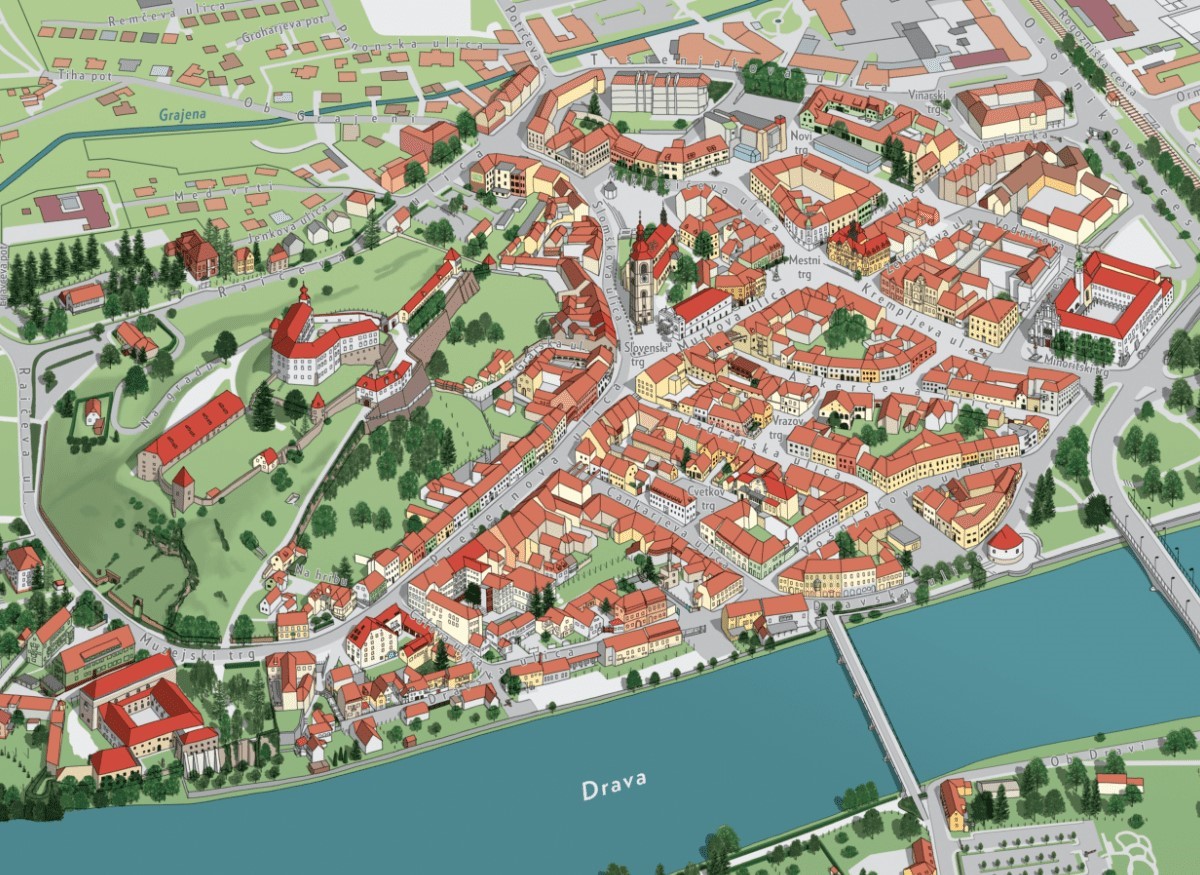
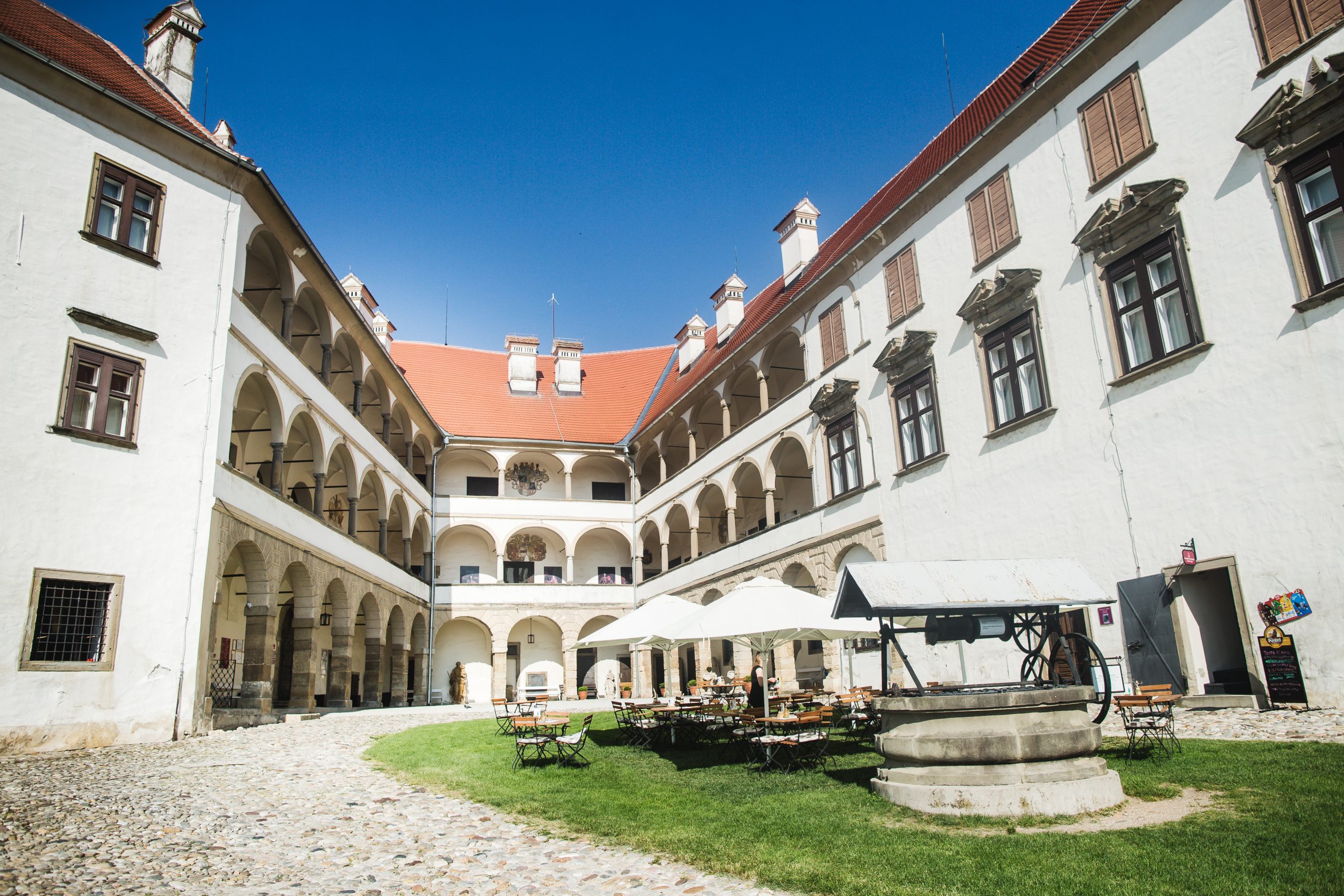
PTUJ CITY
In the Ptuj-Ormož Regional Museum, in the collection of traditional carnival characters, you can meet the Kurent / Korant through time and many other traditional carnival masks from Ptuj and Drava fields, Haloze and Slovenske gorice. In the TIC you can get tourist information, a map of the city and its surroundings and a wide range of tourist publications, many unique souvenirs or book a guided tour of the city.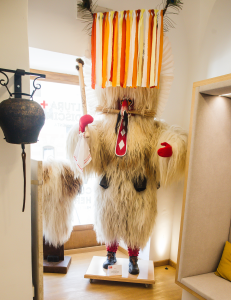
TIC Ptuj
Many visitors also visit the tourist information center because of Kurent / Korant. This conjures up the atmosphere of Kurentovanje in the so-called Kurent corner, where, in addition to Kurent's work - Kurentija, they can also watch promotional films about Kurent and Kurentovanje. Many admirers of this mysterious carnival character are convinced of its uniqueness right after visiting Tic and decide to visit the next Kurentovanje. You can also get to know Kurent's story in an interactive way with the help of the mobile application for augmented reality Travel AR Slovenia - Ptuj.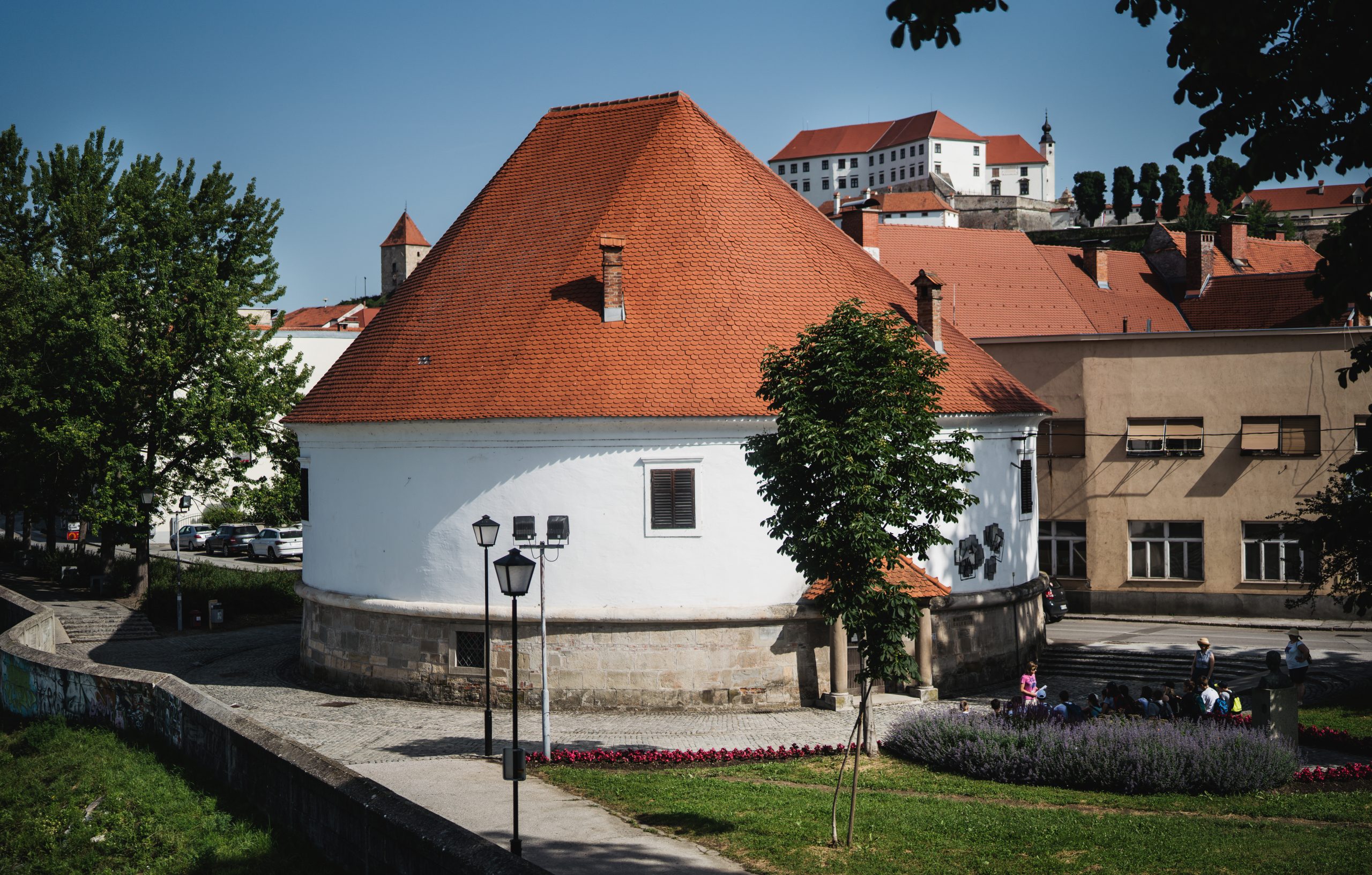
MIHELIČ GALLERY
France Mihelič is one of the most important Ptuj painters of the 20th century. The artist taught drawing at the Ptuj Gymnasium in the years 1936-1941. The picturesque surroundings, and especially the demonic kurent, were the central motifs of his artistic creations. The Mihelič Gallery in the former defensive tower along the Drava, where the painter's graphic collection is housed, is also named after him. The gallery is also intended for exhibitions of contemporary art, with an emphasis on Ptuj authors.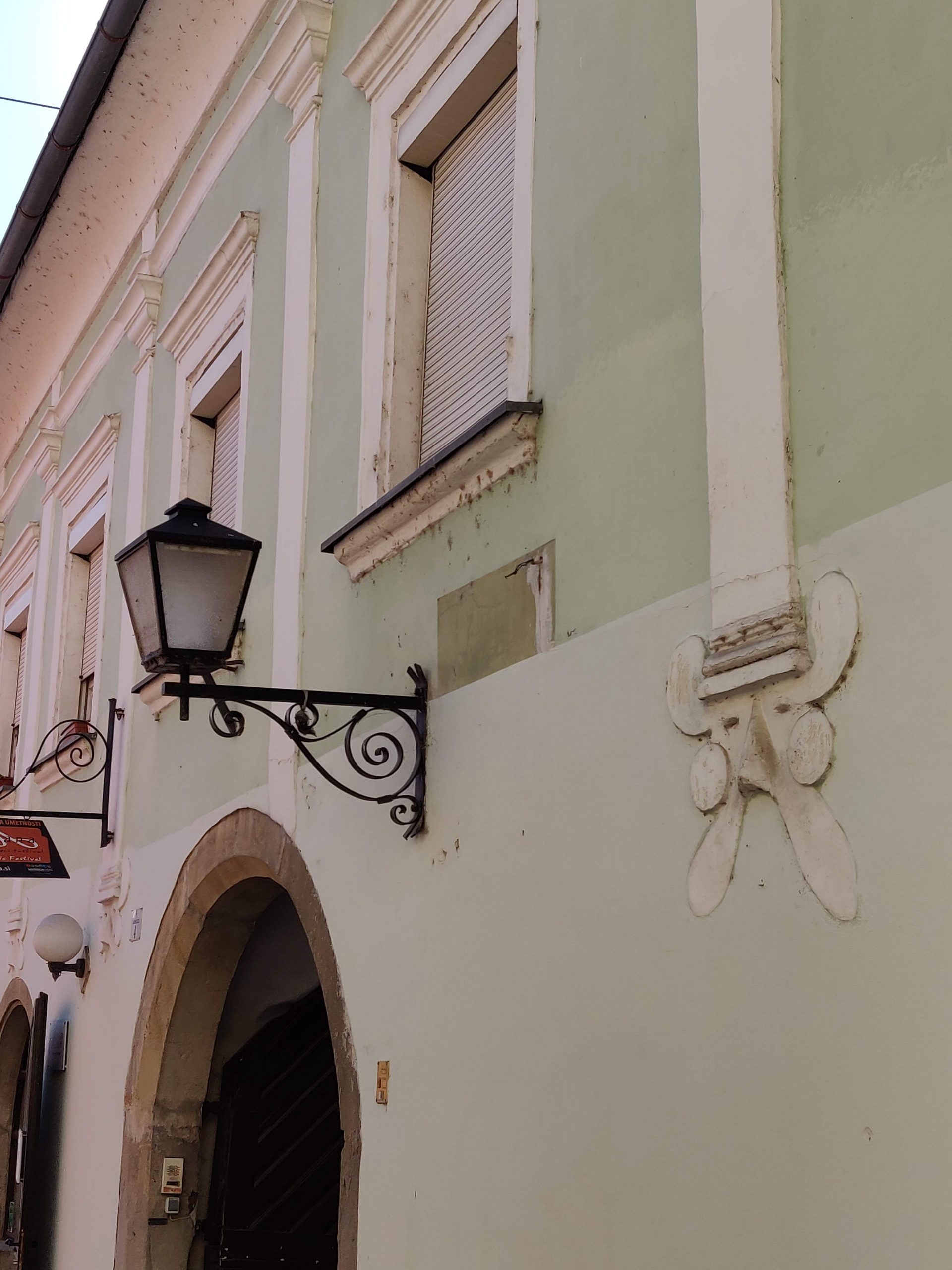
JADRANSKA STREET
On Jadranska ulica in the old town center, you can see interesting depictions of alleged Kurent masks on the facades of houses (Jadranska ul. 4 and 6). The facade of these houses was last restored in the 18th century.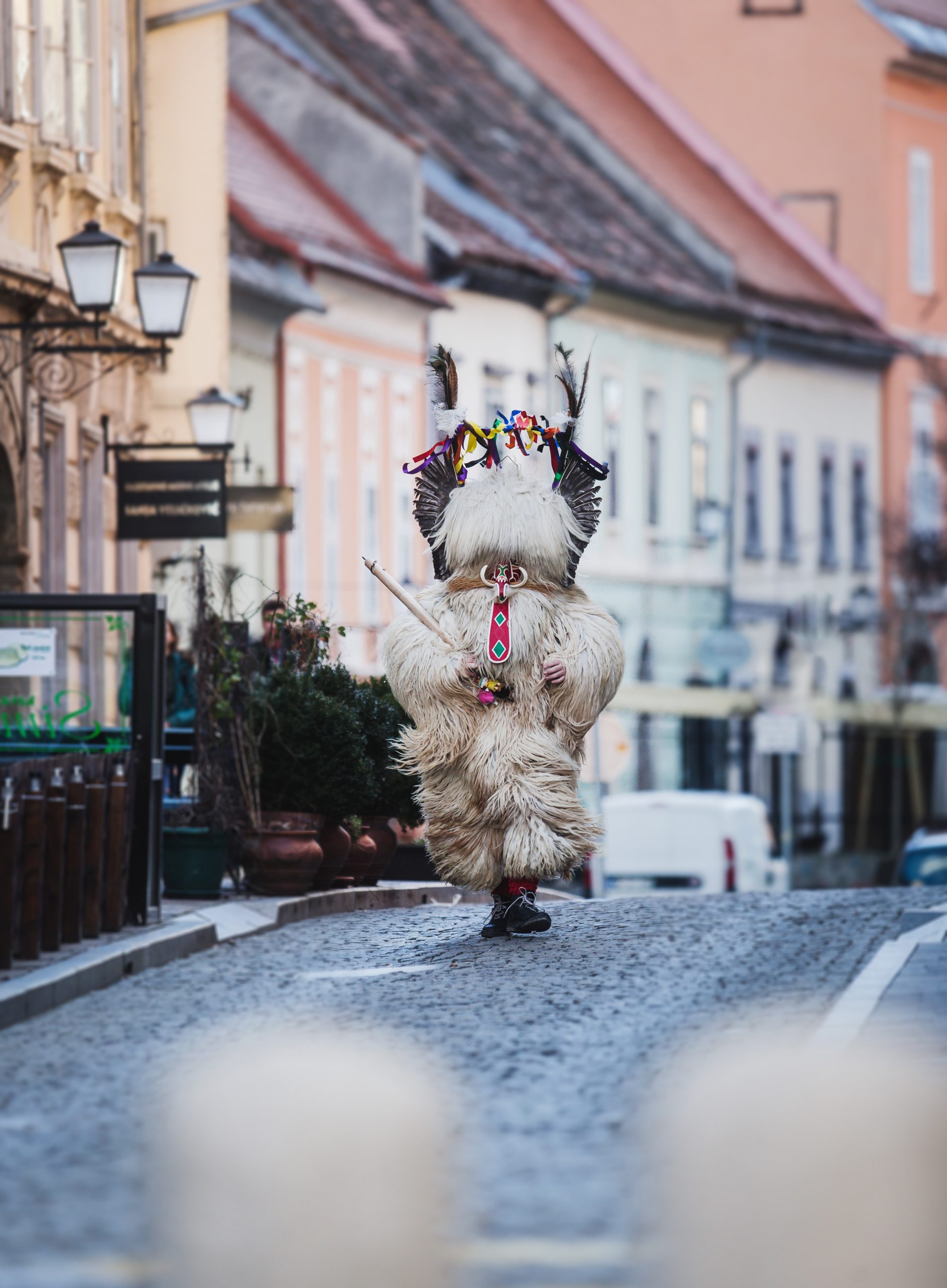
BAR SIMA
The legendary Sima Coffee Bar is considered the so-called Prince's Fortress, where the new Prince's Guard traditionally gathers after the inauguration at the time of St. Martin's Day. The mandate of the Prince of the Ptuj Carnival lasts for two years. Inside the Sima bar, it is possible to relive the memories of the past Kurentovanja in Ptuj, as the walls are decorated with many photographs and memorial plaques on the theme of carnival in the city.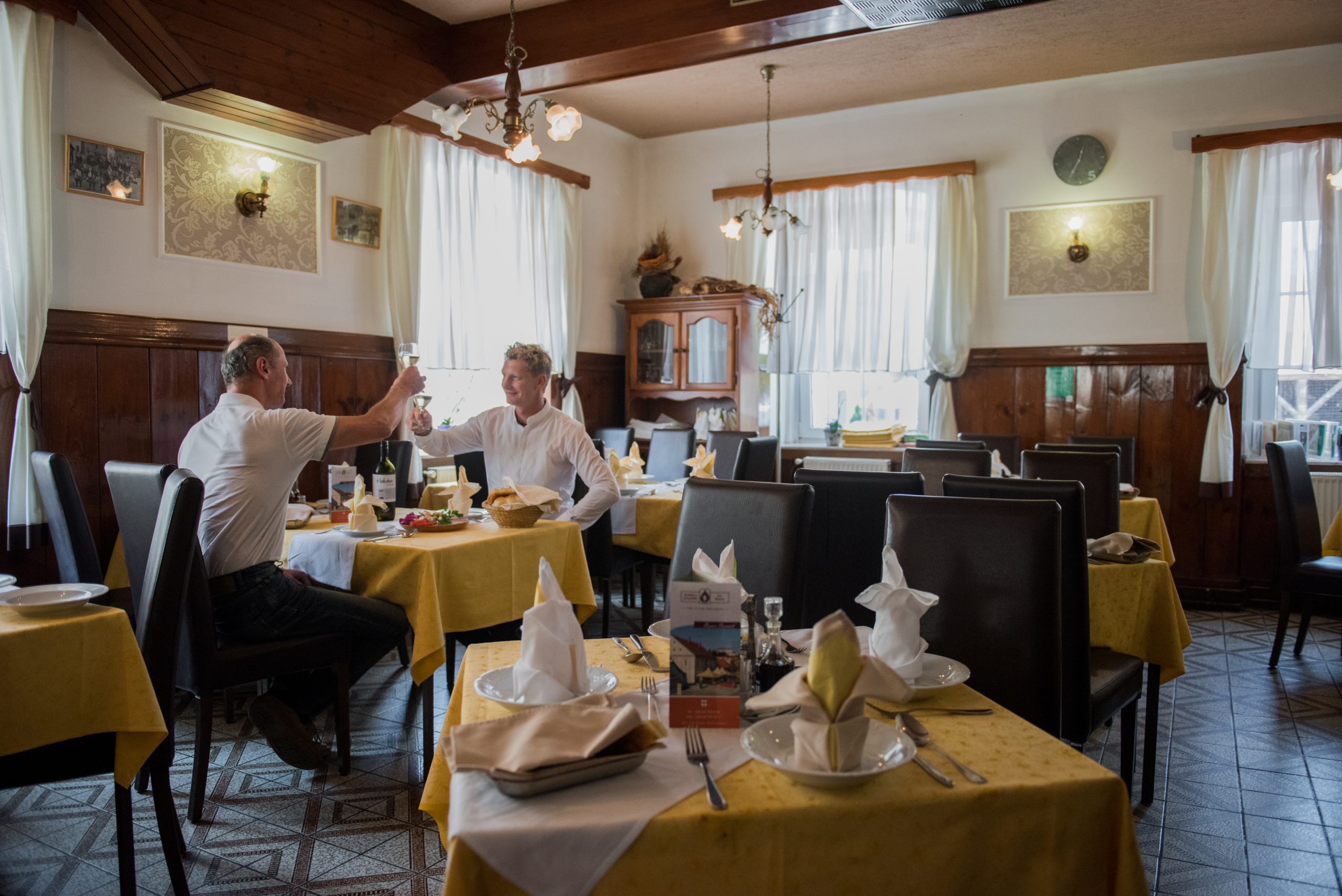
GOSTIŠČE PRI TONETU
In the popular Ptuj coaching inn with a long tradition, you can meet a life-size Kurent in the lobby of the inn. While admiring Kurenti, you can also try a delicious buckwheat cake according to a home-made recipe or some other traditional dish from the rich menu.Experience Ptuj
Whether summer or winter, Ptuj offers cultural experiences 365 days a year. A walk through the oldest Slovenian town takes you past Roman monuments to the beautiful facades of medieval buildings. Paved streets and squares lead to one of the most magnificent castles in Slovenia, from where the view extends to a mosaic of brick roofs of medieval buildings, monasteries and churches.
Experience Ptuj
Whether summer or winter, Ptuj offers cultural experiences 365 days a year. A walk through the oldest Slovenian town takes you past Roman monuments to the beautiful facades of medieval buildings. Paved streets and squares lead to one of the most magnificent castles in Slovenia, from where the view extends to a mosaic of brick roofs of medieval buildings, monasteries and churches.
History of Ptuj
At the lively crossroads of trade routes, where it was possible to cross the Drava safely, people settled as early as the end of the third millennium BC. In the late Iron Age, the area was inhabited by Celts, and the city experienced its greatest prosperity with the arrival of the Romans. At that time, in the area of Poetovione, which was one of the most important seats of the Roman army, archaeologists estimate that about 30,000 people lived there.
In the middle of the 5th century, the territory was ravaged by the Huns, and the unoccupied territory was gradually invaded by the Slavs. At the end of the 8th century, Ptuj came under Frankish rule, and towards the end of the 9th century, the Archdiocese of Salzburg took over power.
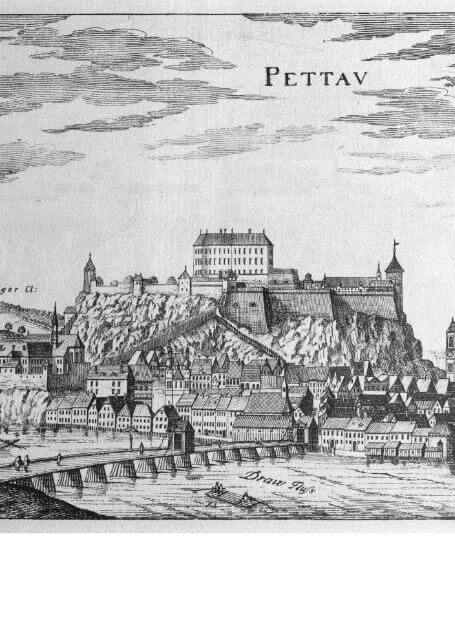
History of Ptuj
At the lively crossroads of trade routes, where it was possible to cross the Drava safely, people settled as early as the end of the third millennium BC. In the late Iron Age, the area was inhabited by Celts, and the city experienced its greatest prosperity with the arrival of the Romans. At that time, in the area of Poetovione, which was one of the most important seats of the Roman army, archaeologists estimate that about 30,000 people lived there.
In the middle of the 5th century, the territory was ravaged by the Huns, and the unoccupied territory was gradually invaded by the Slavs. At the end of the 8th century, Ptuj came under Frankish rule, and towards the end of the 9th century, the Archdiocese of Salzburg took over power.
